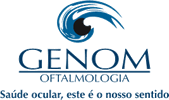
Sessão de Relato de Caso
Código
RC162
Área Técnica
Retina
Instituição onde foi realizado o trabalho
- Principal: Universidade Federal do Ceará (UFC)
Autores
- NAYARA QUEIROZ CARDOSO PINTO (Interesse Comercial: NÃO)
- Jhonatan de Paula Araújo Ferreira (Interesse Comercial: NÃO)
- Ricardo Evangelista Marrocos Aragão (Interesse Comercial: NÃO)
Título
MULTIMODAL IMAGING OF RETINAL ASTROCYTIC HAMARTOMA IN TWO PATIENTS WITH TUBEROUS SCLEROSIS COMPLEX
Objetivo
To present the retina limaging methods in two patients with Tuberous Sclerosis Complex (TSC).
Relato do Caso
Case 1: 27 years old, female, attends for ophthalmologic evaluation with complaints of sporadically light headaches. She have hyperpigmented papules in face suggestive of sebaceous adenomas and plates of shagreen in dorsal. He used for a long time antiepileptic drugs for seizures since birth. The Cranial TC evidenced giant cell subependymal astrocytoma in foramen magnum. In the ophthalmologic examination showed best correct visual acuity (BCVA) 20/20 in the right eye (OD) and 20/20 in the left eye (OS), biomicroscopy was unremarked on both eyes (OU). Applanation Tonometry was 14mmHg in OU. Fundoscopy showed yellowish coriorretinite lesion in the temporal region in the OD and yellowish-white lesion in the equatorial nasal region in OS suggestive of retinal astrocytoma. Case 2: 33 years old, female, came to an ophtalmological routine exam. She reported use of anticonvulsants drugs in childhood . The patient underwent total nephrectomy in right kidney due to benign renal tumors suggestive of angiomyolipomas. Ophthalmological examination showed BCVA 20/20 in OU. Biomicroscopy was unremarked in OU. Applanation Tonometry: 12mmHg in OU. Fundoscopy showed in the OD lesion yellowish-white( hamartoma), high and situated near the temporal region of the optical disc, and in the OS yellowish lesions and plans (hamartoma), located centrally above the optic disk and in top and bottom of temporal vascular arcade, anatomical fovea and retina applied.
Conclusão
The knowledge of principal ophtalmological findings and the retinal imaging methods, is important to detect the disease, even in its early-stage. The most of retinal astrocystic hamartoma are benign, but they can grow excessively causing serious ophthalmic complications evolving to irreversible vision loss, requiring longitudinal follow up. Moreover, once a hamartoma is found on ophthalmologic exam should prompt a workup for TSC including brain imaging, echocardiogram and renal ultrasound.












